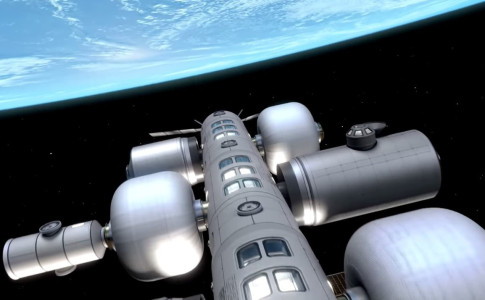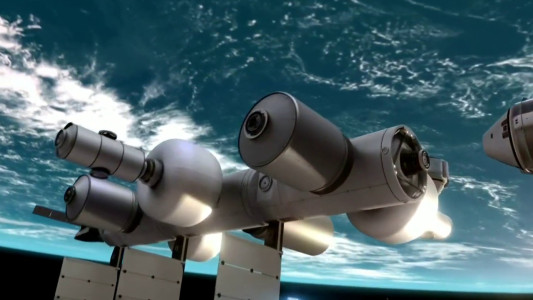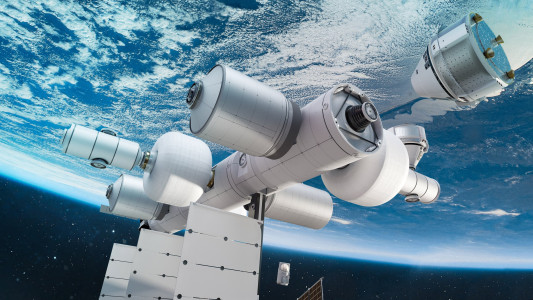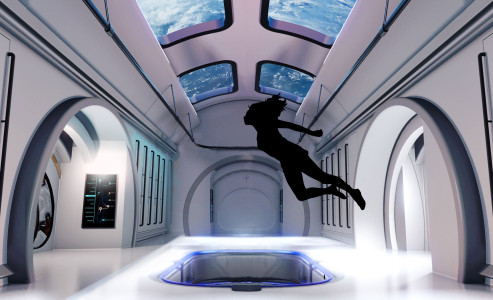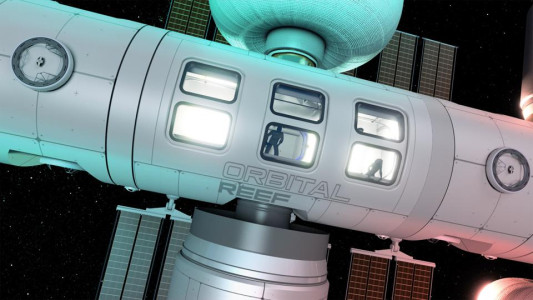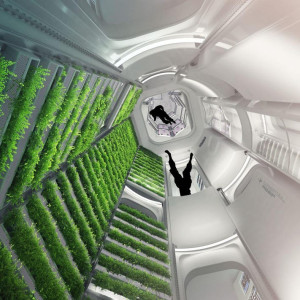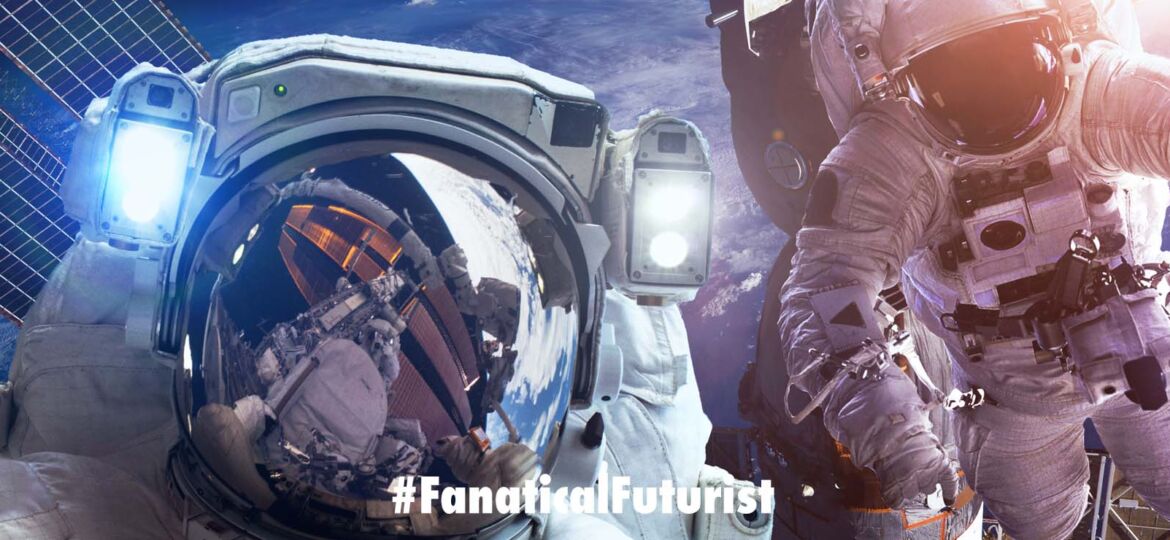
WHY THIS MATTERS IN BRIEF
Increasingly rich individuals and private companies are taking on the roles that only governments used to be able to fund and afford.
 Love the Exponential Future? Join our XPotential Community, future proof yourself with courses from XPotential University, read about exponential tech and trends, connect, watch a keynote, or browse my blog.
Love the Exponential Future? Join our XPotential Community, future proof yourself with courses from XPotential University, read about exponential tech and trends, connect, watch a keynote, or browse my blog.
Jeff Bezos wants to create a “road to space” that entrepreneurs can build on, put a million people in a floating space colony, build settlements on the Moon, and move heavy industry off Earth all before he eats his breakfast in the morning. And now he and his space company Blue Origin have announced that they plan on building their own free-flying space station which would compete with, or even replace the ageing International Space Station (ISS).
Called Orbital Reef the future space station slash hotel slash business park slash research center slash media hang out will begin operating in the second half of this decade, according to Blue Origin, providing a place for researchers, industrial and commercial customers, and international partners to visit and work.
Learn more about the Future of Space, by Futurist Keynote Matthew Griffin
Blue Origin is working on the Orbital Reef project in partnership with spaceflight company Sierra Space. Sierra Space’s most well-known project is the Dream Chaser, a winged spaceplane designed to carry cargo — and perhaps people one day — ISS. Dream Chaser is scheduled to begin cargo flights in 2022. Blue Origin says that Orbital Reef also has the backing of additional spaceflight teammates, including industry heavyweight Boeing, as well as Redwire Space, Genesis Engineering Solutions, and Arizona State University.
With an internal volume nearly as large as the International Space Station’s, Orbital Reef will be able to house up to 10 people, with separate areas for living and conducting science, according to Blue Origin. The company claims that Orbital Reef will be a “mixed-use business park” in space that will have multiple ports and berths for visiting spacecraft and modules, along with various utilities and amenities. Blue Origin boasts that the space station will have an “open system architecture” that will allow a variety of people and customers to use the facility. A list of possible users included space agencies, media and travel companies, entrepreneurs and investors, tech companies, and more, according to Blue Origin. Blue Origin also claims that it will provide “end-to-end” services for anyone wishing to use the station, from transportation, leasing space, technological assistance with hardware, and robotic services.
Courtesy: Blue Origin
“As the premier commercial destination in low Earth orbit, Orbital Reef will provide the essential infrastructure needed to scale economic activity and open new markets in space,” Blue Origin writes in a press release.
During a press conference, Blue Origin and its teammates refused to detail how much the space station would cost, nor would they say how much investment each of the partners would provide for the project.
“The question you’re asking is part of our business case and we’re not going to give you a specific number,” Brent Sherwood, senior vice president of advanced development programs for Blue Origin, said when asked about the total cost of Orbital Reef.
The companies said they envision that Boeing’s new Starliner spacecraft and Sierra Space’s Dream Chaser would provide human and cargo transport to Orbital Reef. Dream Chaser has yet to fly, and Starliner has not flown people to orbit yet. The plan is to also launch most of Orbital Reef’s modules on Blue Origin’s future New Glenn rocket — another rocket that hasn’t flown yet. It’s possible that smaller pieces of the station could fly on other commercial rockets.
“The large volume modules and systems that Blue Origin is building are optimized for New Glenn’s diameter and throw capacity,” Sherwood said. “Some of the elements are smaller and could launch on other systems as well, but a nominal point of departure plan is that all of these will launch on New Glenn.”
Blue Origin has dropped hints in the past of its plans to potentially build a space station, and NASA is providing incentives for companies to pursue such projects. This year, NASA announced the creation of a new initiative called the Commercial Low Earth Orbit (LEO) Development — or CLD — program. The goal is to provide spaceflight companies with money to help jumpstart the development of private space stations that NASA could visit one day. NASA plans to award up to $400 million through two to four Space Act Agreements to fund initial studies of these space stations.
The CLD program is just one step in NASA’s long-term plan to eventually phase out the government-run International Space Station and transition to the use of commercial space stations. Currently, the ISS is slated to continue operating through 2024, and NASA has been eyeing an extension of the program through 2028. But the ISS is expensive, costing NASA $3 to $4 billion to operate each year, and the decades-old station can’t last forever. Eventually, NASA wants to retire the station and fill low Earth orbit — the domain of the ISS — with company-run space stations as they focus their human spaceflight efforts on deep space destinations instead.
In September, NASA claimed it got about a dozen proposals for the initiative.
“We got an incredibly strong response from industry to our announcement for proposals for commercial, free fliers that go directly to orbit,” Phil McAlister, the director of commercial spaceflight at NASA told CNBC at the time. “I can’t remember the last time we got that many proposals [in response] to a [human spaceflight] contract announcement.”
NASA leadership has been considering this kind of future for many years. NASA already holds a contract with one company, Axiom, to develop a private space station that can dock with the ISS as part of a previous space agency initiative called NextSTEP. Axiom plans for this docked space station to be a precursor to a free-flying space station slash space hotel sometime later. Blue Origin claimed at their press conference that NASA has indicated that it plans to be an “anchor tenant” of Orbital Reef.
Right now, Blue Origin’s only operational spaceflight project is New Shepard, a suborbital tourist rocket designed to send paying customers to the edge of space and back. So far, the company has flown eight people to space on New Shepard, including Bezos, Blue Origin’s founder. Other projects in development include New Glenn, a rocket designed to take cargo and people to orbit, as well as Blue Moon, a lunar lander that could take humans to the Moon’s surface, but neither of those projects has been completed yet.

